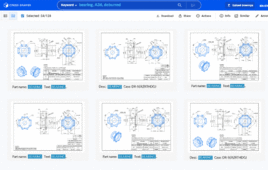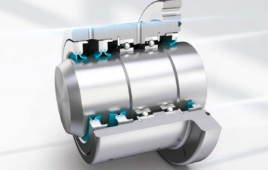Simpler, more flexible, more productive, more efficient – as the demands on plant and machinery rise, so too does the level of automation. Control technology plays a key role. It is the play-maker; it processes the digital and analog signals from the sensors and input devices, sends them to actuators, drives and control devices and keeps the plant running. The number of relationships within a machine and the level of networking are rising.

In addition, people are moving ever closer to the process, usually to fit and set up machinery. Close man-machine interaction can help to improve plant availability and increase productivity. Accordingly, safe automation is crucial within the whole automation concept. With intelligent, safe control architectures, users have the freedom for custom implemen-tation of the safety requirements for design, operating and service concepts, as well as operator regulations.
Standardizing safety
The determining factor for selecting the appropriate safety system is the plant’s function. For example, stand-alone machines have fewer safety functions than interlinked machines and do not need an overriding safety function, such as a safety area shutdown. Configurable control systems are suitable for this type of application.
One classic application area is series machine building. In this case, manufacturers are often forced to use prescribed or country specific machine control systems. Slight changes are continually needed to the standard automation concept. Openness is therefore essential. The Pilz configurable control systems PNOZmulti supports all common fieldbus and Ethernet-based communication systems, so machine operators can choose the operational control system that best suits their individual needs without worrying about how safety is connected. Both manufacturers and users benefit from this standardization of safety, in terms of troubleshooting, machine design and training.
PNOZmulti is an easy to use configurable control system. Instead of carrying out the wiring manually, a user creates a safety program using the software tool PNOZmulti Configurator and the certified function blocks for safety related functions stored within it.
PNOZmulti is powerful enough to assume complete machine control on smaller machines. As a result, the machine builder has no need for an additional control system and so can find savings in a range of areas, from hardware costs and space in the control cabinet to procurement and stock holding costs.
Safety and standard in one system
Increasingly, safety is no longer dominated by static events, such as the actuation of an emergency stop mechanism or the opening of a guard door. Safety protocols must be capable of reacting to multifaceted situations or to the results of complex calculations.
Dynamic safety concepts, such as different operating modes or torque monitoring based on the position of one or more axes, will continue to find their way into the control architecture in the future. Increasingly, that requires complex relationships with the individual elements in the overall process chain. Machine data – whether for standard or safety – must be capable of being processed together.
The trend is for standard and safety functions to use common control architecture. Hybrid designs are catching on, especially in distributed systems, to minimize cabling complexity and interface problems, for example.
Machine tools are one example: Safe CNC or motion controllers record safety related information such as linear speed, rotational speed or standstill at the various axes directly through their integrated encoder systems, passing the information on to safety control systems for safe evaluation. In this case they not only process local safety functions, but also record and forward standard signals, for monitoring end positions, for example. Just one common periphery system is needed for the important control-related process signals as standard I/Os and the I/Os for the safety functions. Thanks to the openness of the safety control system, additional encoder systems, interface problems or adapter units are consigned to the past. Here Pilz can offer the control systems PSSuniversal multi.
The control systems PSSuniversal PLC illustrate how the synergies can be for visualization, diagnostics, servicing, maintenance work and engineering when functional and safety-related parts of a machine control system can be considered together. Users can choose whether to program using the standard editors in accordance with EN/IEC 61131-3 for standard and safety tasks or configure using the Program Editor PASmulti, which continues the configuration philosophy of the PNOZmulti Configurator.
Distributing intelligence
Both PSSuniversal multi and PSSuniversal PLC are control systems in the automation system PSS 4000 from Pilz. The central idea of PSS 4000 is to merge standard automation and safety. Process or control data, failsafe data and diagnostic information are exchanged and synchronized through the Ethernet-based SafetyNET p. For the control function, therefore, it makes no difference where the respective program section is processed. Instead of a central control system, a user program distributed in runtime is made available to the user within a central project. All network subscribers are configured, programmed and diagnosed this way. So for all control tasks, the user maintains a central view of distributed systems.
If the intelligence is distributed in the machine components, the benefits can be seen in greater availability due to local error reactions and higher productivity as a result of shorter reaction times across the whole system. Dividing the intelligence into smaller machine components also improves scalability.
Such multi-master automation structures result in largely stand-alone cell control systems, which can interact within the network. So PSS 4000 enables the mechatronic approach to be transferred to the control level, which is a key step towards Industry 4.0. Plants can be broken down into manageable, independently functioning units. As a result, the cost of engineering, commissioning and maintenance is reduced. If plants are thought out and designed mechatronically, the system and hardware can be developed in parallel.
Pilz Automation Safety, L.P.
www.pilz.us
Filed Under: Automotive, INDUSTRIAL SAFETY SYSTEMS, MORE INDUSTRIES





Tell Us What You Think!